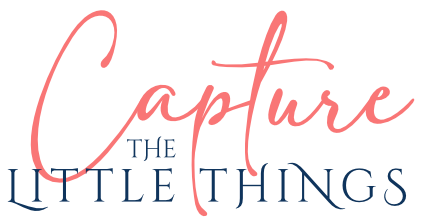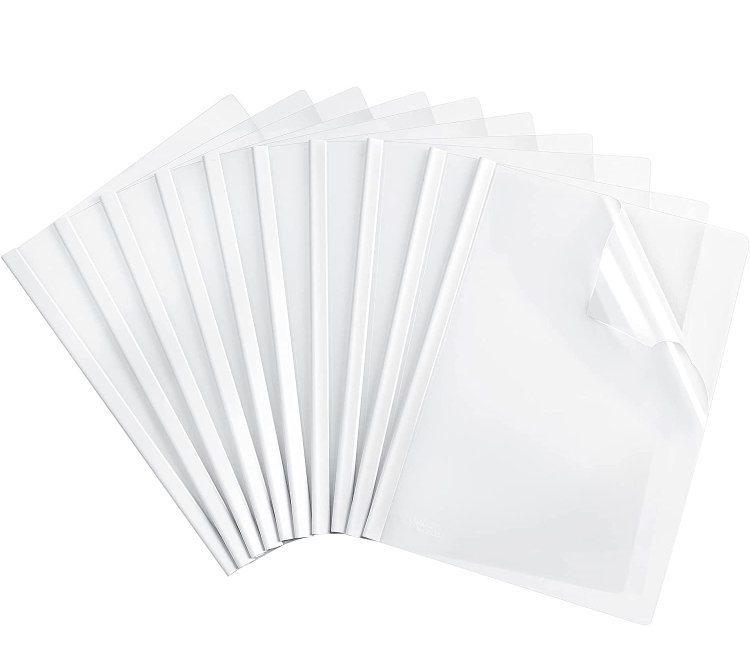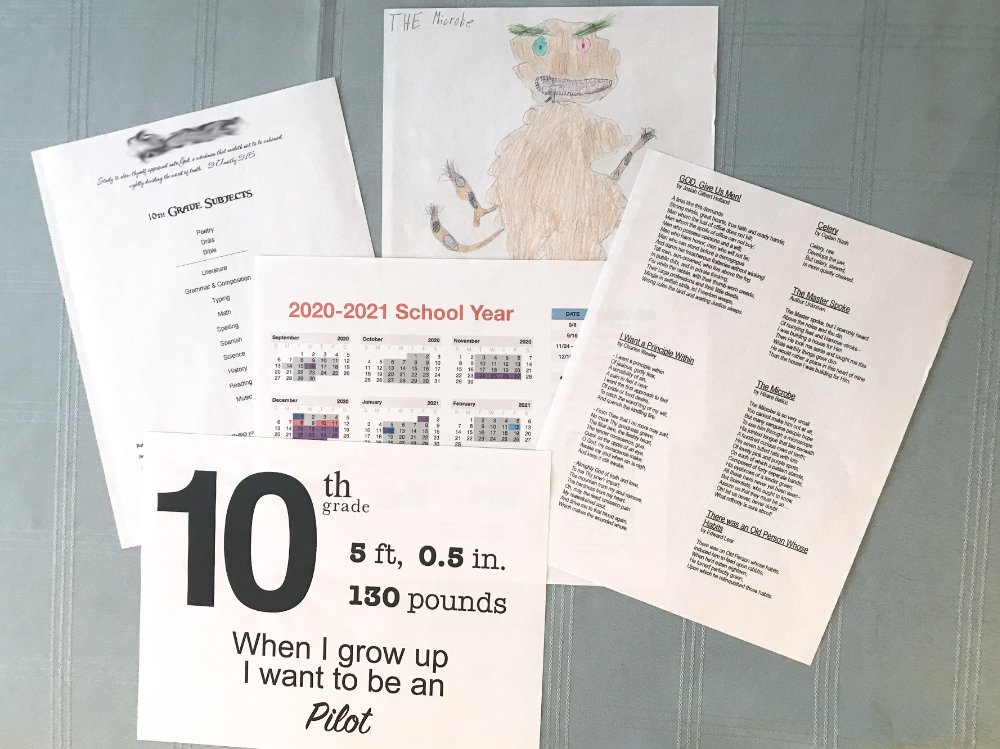End of the Year School Organization — Homeschool Edition
Keeping your school books and supplies organized is a vital key to homeschool sanity!
At the end of the school year, I like to clean out all the books and prep my school area for a new year. By doing this immediately after we’ve finished a school year, the materials are still fresh on my mind and I’m familiar with what I can get rid of and what I should keep.
The first step to prepping for the next school year, is dealing with all the books and papers from this year.
1. Divide Everything into Subjects
Start by spreading out ALL the books from one grade and make a pile for each subject. These piles should include the textbook/workbook, student notebooks for the subject, teacher manual/lesson plans, test & quiz books, answer keys, and any other materials that accompany the subject.
2. Keep Only a Sample
Unless your state requires it, there is no need to keep all of your childrens’ notebooks and workbooks. Please make sure you follow your state’s guidelines!
Because it is nice to keep some of a child’s work to reflect the year, I like to make what I like to call a Memory Portfolio. This is loosely based off of the portfolio that some states require from homeschooling parents. However, a Memory Portfolio is for the sake of you and your child, not the state. It is a place to gather the best memories from the school year.
To make a Memory Portfolio we will begin by looking through each student’s notebooks and workbooks. As you look through these, look for things that are handwritten and especially sum up your child’s personality. It is not necessary to keep every single book or every single paper that has your child’s handwriting on it. Throwing away something that contains your child’s handwriting is in no way disrespectful to the child and in no way does it mean that you don’t love that child.
A good example is this note that my son wrote in his Language workbook. In one glance, I can see his imaginative brain at work, his (sloppy) random handwriting, and something he learned about this year.
It only takes a second to tear out the pages you wish to keep, write your child’s name and grade at the top, then place them on the “keep” pile. Try to limit your keep pile to 2-3 pages per subject if at all possible. Remember, it all adds up! We only want a sampling, not a museum!
Don’t get bogged down with what to keep and what to discard. Clearly, you don’t need to keep pages of underlined subjects and verbs. Look for original stories or sentences that your child wrote on their own, not simply copied from the book. You don’t need to keep a whole notebook of answers to math, history, or science lessons.
If something is larger than 8.5 x 11 inches, scan it or take a photo of it and have it printed.
I highly recommend that you do not get your child involved in this. Children often are not able to recognize what is worth keeping and what isn’t. They will almost without fail want to keep everything and that simply is not practical.
You will want to repeat this process with each child. Be careful that you don’t mix them up! Remember, the key here is to only keep a SAMPLE of handwritten pages that reflect your child’s personality at this stage in their life.
3. Discard
Once you have finished going through all the notebooks and workbooks, gather the saved papers and organize them by subject. You can now discard (recycle) the rest of the notebooks and workbooks. Trust me, it’s ok to do this! You will survive!
DISCLAIMER #1: In some states, it may be wise to hang on to the books for a few years. Please know and follow your state's requirements.
NOTE: If your child is in high school, make sure you know what your state requires you to keep. My state does not require that I keep anything; however, I personally like to keep all high school tests for the time being. I will discard them eventually.
4. Preserve the Memories
To create your Memory Portfolio, I have found the best thing to use is a clear report cover with a sliding bar. This will keep papers from getting scattered everywhere and will create that portfolio feel.
If you’re not familiar with these, look for "sliding bar clear report covers" on Amazon and you’ll find a variety to choose from. (I have occasionally found them at Walmart.) I absolutely love report covers and use them all time time in school! A big plus is that there no hole-punching needed!!
Slip the papers you kept into a report cover. I like to design a simple “title page” that states the child’s name, grade, and the year.
Don’t get carried away with this, but here are a few other ideas of pages to include in your child’s Memory Portfolio.
A list of the final grade for each subject
Attendance chart for the year
End of the Year survey (favorite subject, favorite memory of the year, etc.)
Summary of classes taken
Class schedule
Lists of poems or verses memorized
When I Grow Up…
Download my FREE Printable for more ideas!
Designate a box specifically for your child’s school memories and add Memory Portfolio to that box. This is also a good time to add any book reports or research projects to the box; I like to keep those in report covers as well.
5. Determine if You Should Store or Sell
At this point, the only things you should have left are non-consumables such as textbooks, teacher keys, manuals/lesson plans, and accompanying materials.
You now have two options:
Keep them for younger children
Get rid of them
If you know you will be using the materials again for a younger child, make a note of the books that will be needed to accompany each subject (such as a workbook for Grammar or a test book for Science). Then, gather everything by subject, place it in a labeled box, and put it in storage until you need it again. I recommend only keeping one grade per box which may mean using smaller boxes. (I love Amazon boxes for this!)
However, if you know you will NOT need the books again, you’ll need to decide what to do with them. Your options are sell, donate, or give to a friend. Personally, I like to resell most of my books and use that money to help buy books for the next year. If you choose to sell your books, you will need to evaluate if they are actually worth trying to sell online. Remember to count your time, shipping costs, and trips to the post office into that. Since you already have the books out, now is a good time to take photos of the books you wish to sell online.
If you’re donating your books or giving them away, box them up right away, label the box, and take them to your car so they do not sit around the house all summer!
Now, you’re ready for summer break and you don’t have the mental burden of last year’s books on your mind any more!
Happy Organizing!!









